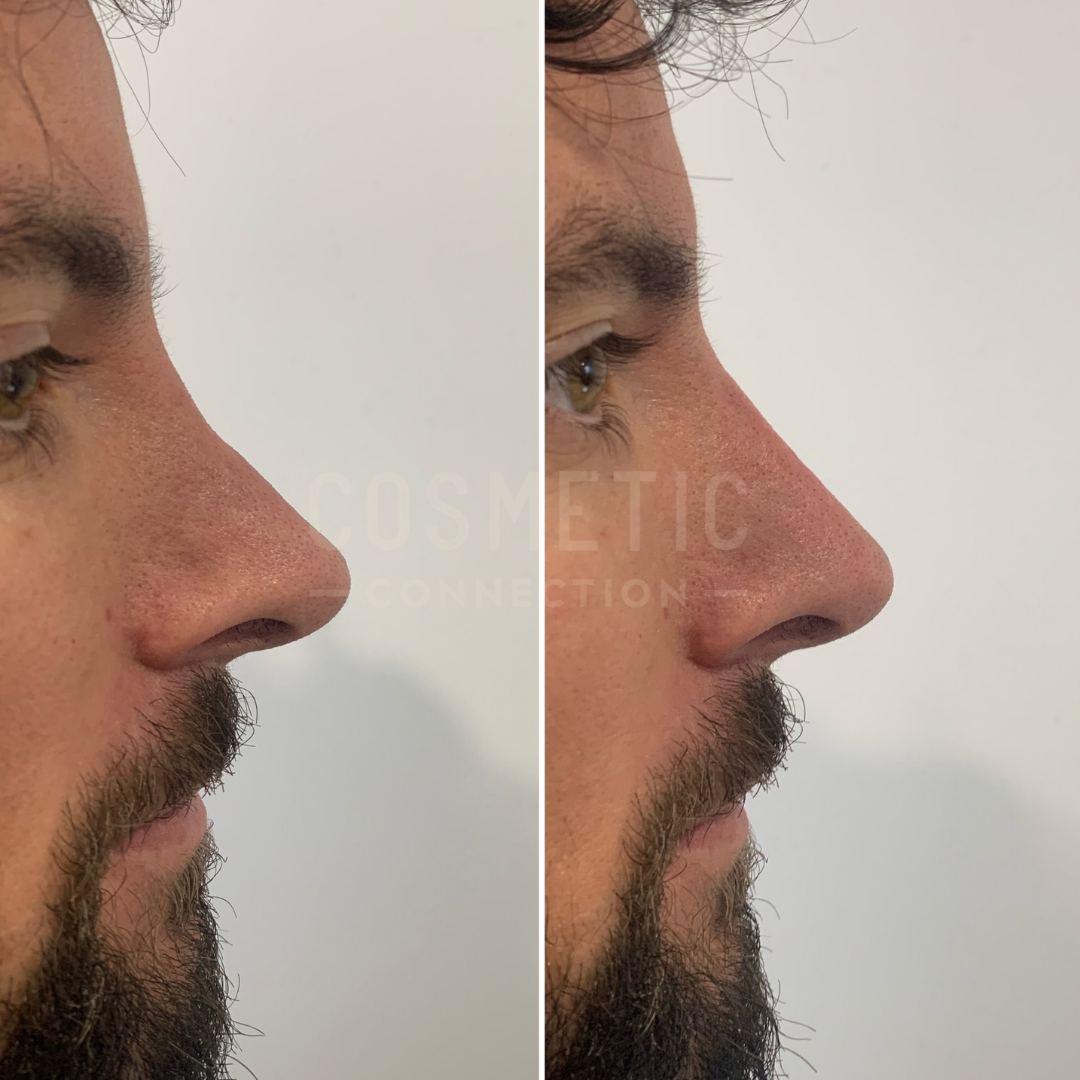Did you know that the dissatisfaction rate after surgical rhinoplasty can be over 40%?
So what happens if you’ve had a rhinoplasty and aren’t happy? Maybe it’s the slightest imperfection? Or maybe you feel like you’ve been botched? Perhaps you used to love your result, but over the years your preferences have changed, or your nose has aged.
Do you really want to go through surgery again? Revision rhinoplasty is more expensive, more risky, and less predictable than your first. What if there way a simpler solution?
There is.
Many people who don’t like their nose after surgery are suitable for a non-surgical rhinoplasty (nose fillers). While it’s a simple treatment, there are of course risks (like any medical procedure). So it’s important to consult with a qualified doctor for a proper assessment. But what can fillers actually help with?
Potential benefits of using fillers after rhinoplasty
- Correct imperfections: Fillers can improve bumps and depressions that weren’t fully corrected during surgery, or that resulted from it.
- Refine the tip: In some cases, fillers can improve the definition of your nose tip, for a sharper, lifted look.
- Non-invasive and reversible: Fillers can improve your post-surgical nose in 5-10 minutes. Results are immediate and reversible, and there’s no downtime involved.

Before, immediately after, and years after a non-surgical rhinoplasty to improve the result from a surgical nose job.
Important considerations and potential risks
- Suitability: Not everyone who has had rhinoplasty is a good candidate for fillers. It depends on the specific problem, your expectations, and how much scar tissue you have.
- Limitations: Fillers cannot address major aesthetic significant concerns which are best addressed surgically.
- Timeframe: You need to wait for the swelling from your rhinoplasty to subside before considering nose fillers.
- Potential complications: Fillers carry risks like infections and blocked blood vessels which can cause tissue damage. Experienced doctors can reduce these risks.
If you aren’t happy with your rhinoplasty and aren’t prepared to have a revision, consider a non-surgical rhinoplasty as an solution.

